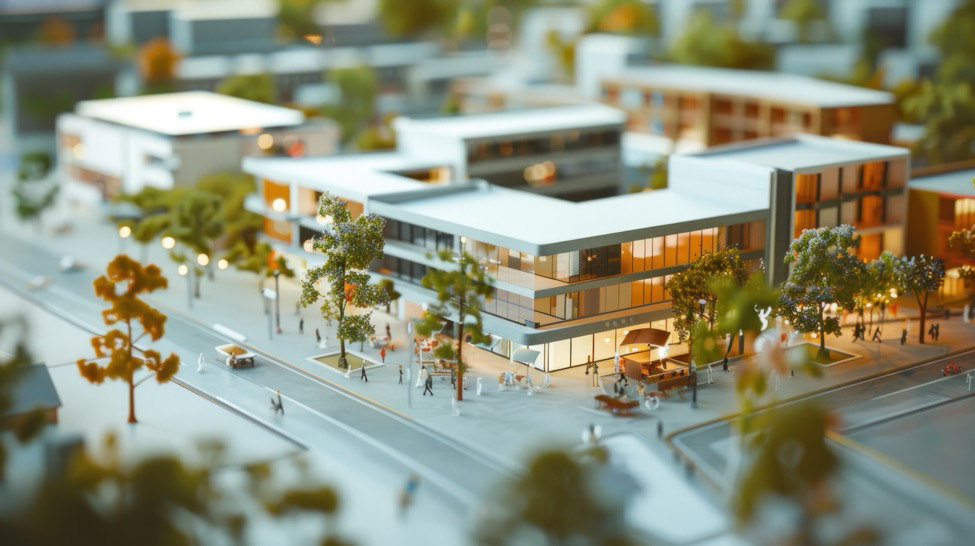Commercial construction has a lasting impact on cities’ structure and character. Today, it is increasingly important for these projects to do more than fulfill business needs—they must also support the growth of livable, inclusive, and sustainable communities. By aligning with urban development initiatives, commercial construction can help create community-centric spaces that enrich both people and the environment.
Community-centric design places people at the forefront. Commercial construction projects now commonly include features that encourage public use and social interaction. Open-air plazas, seating areas, green spaces, and community event zones are just a few examples. These elements transform commercial properties into shared environments where residents can gather, connect, and build a sense of belonging.

Mixed-use developments combine commercial, residential, and recreational spaces within a single project. These developments reduce commute times, boost foot traffic for businesses, and foster social interaction. Commercial builders that adopt this approach contribute to stronger, more integrated neighborhoods that support long-term economic and social well-being.
Environmental responsibility is a major focus in urban development. Commercial construction can support these goals through sustainable practices such as energy-efficient building designs, the use of green materials, and the reduction of waste and emissions. Green buildings not only lower utility costs but also contribute to cleaner, healthier communities—an increasingly important factor in modern city planning.
Commercial projects that prioritize community involvement have the potential to strengthen local economies. Hiring local labor, sourcing materials locally, and partnering with community stakeholders during the planning and building phases ensure that projects reflect the community’s needs and values. These efforts can lead to job creation and stronger local economic resilience.
Accessibility and transportation are key to successful urban development. Commercial projects located near public transit options and designed with walkability in mind can reduce traffic congestion and pollution. This approach not only benefits the environment but also increases access for residents from all walks of life, making these spaces more inclusive.
When commercial construction aligns with urban development principles, the result is more than functional infrastructure—it’s a foundation for thriving communities. Through thoughtful planning, sustainability, and local engagement, builders can create lasting spaces that serve both economic purposes and social well-being. As cities continue to grow, such collaboration will be essential for shaping a better, more connected urban future.
For businesses and developers looking to align their projects with community-focused urban development in Austin, TX, Freccia Group Commercial Construction is a trusted partner. As a leading commercial construction company, we specialize in creating spaces that are both functional and community-friendly. Whether you need a tenant improvement expert, an office remodeler, or a full commercial build-out contractor in Austin, our team delivers quality results.
Learn more about Freccia Group Commercial Construction and call us for a free estimate.